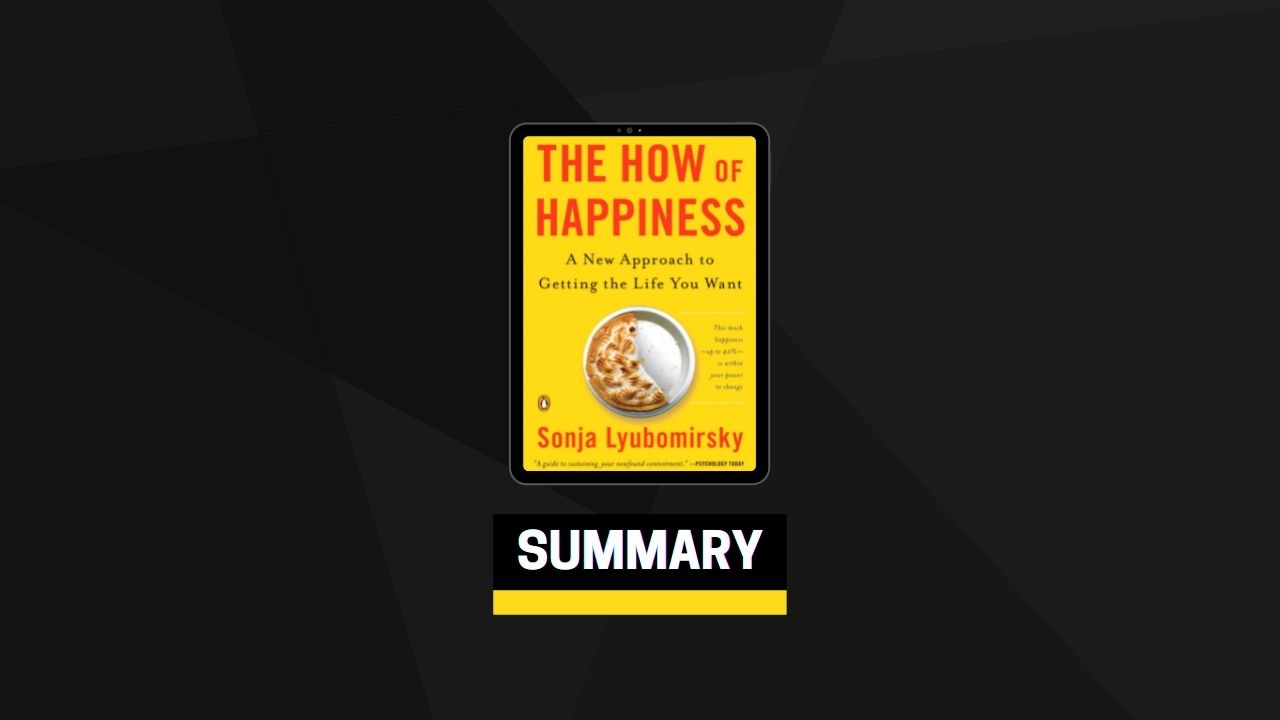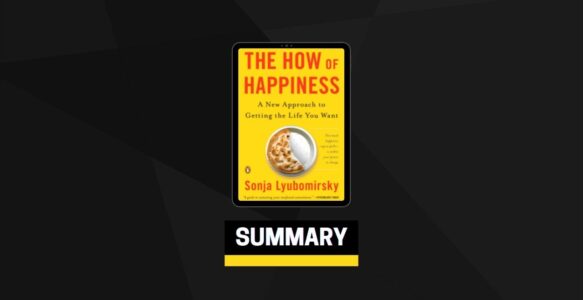Is It Possible to Become Happier?
Across all the domains of life, happiness appears to have numerous positive by-products that few of us have taken the time to really understand. In becoming happier, we not only boost experiences of joy, contentment, love, pride, and awe but also improve other aspects of our lives: our energy levels, our immune systems, our engagement with work and with other people, and our physical and mental health. In becoming happier, we bolster as well our feelings of self-confidence and self-esteem; we come to believe that we are worthy human beings, deserving of respect. A final and perhaps least appreciated plus is that if we become happier, we benefit not only ourselves but also our partners, families, communities, and even society at large.
How Happy Are You and Why?
The media are constantly telling us about the latest newfangled strategy shown to “really” work in boosting health and well-being. These strategies keep changing, each one evidently bested by the next, such that every new pronouncement becomes harder to believe. If the new kind of yoga or meditation or marital therapy technique were as effective as the reports claim, then wouldn’t everyone be doing it and benefiting from it? Well, no. Any major life-changing endeavor must be accompanied by considerable sustained effort, and the majority of people do not or cannot continue putting out that kind of effort. What’s more, all new happiness-enhancing or health-boosting strategies have something in common; each one bestows on the person a specific goal, something to do and to look forward. Moreover having goals in and of themselves is strongly associated with happiness and life satisfaction. That’s why—at least for a time—any new happiness strategy does work!
The fountain of happiness can be found in how you behave, what you think, and what goals you set every day of your life. “There is no happiness without action.” If feelings of passivity and futility overcome you whenever you face up to your happiness set point or to your circumstances, you must know that a genuine and abiding happiness is indeed within your reach, lying within the 40 percent of the happiness pie chart that’s yours to guide.
Happiness Activity No. 1: Expressing Gratitude
The expression of gratitude is a kind of metastrategy for achieving happiness. Gratitude is many things to many people. It is wonder; it is appreciation; it is looking at the bright side of a setback; it is fathoming abundance; it is thanking someone in your life; it is thanking God; it is “counting blessings.” It is savoring; it is not taking things for granted; it is coping; it is present-oriented. Gratitude is an antidote to negative emotions, a neutralizer of envy, avarice, hostility, worry, and irritation. The average person, however, probably associates gratitude with saying thank you for a gift or benefit received.
Expressing gratitude is a lot more than saying thank you. Emerging research has recently started to draw attention to its multiple benefits. People who are consistently grateful have been found to be relatively happier, more energetic, and more hopeful and to report experiencing more frequent positive emotions. They also tend to be more helpful and empathic, more spiritual and religious, more forgiving, and less materialistic than others who are less predisposed to gratefulness. Furthermore, the more a person is inclined to gratitude, the less likely he or she is to be depressed, anxious, lonely, envious, or neurotic.
How To Practice Gratitude
How exactly you accomplish this is up to you; what’s needed is simply to select at least one activity from the array of possibilities below.
Gratitude journal. If you enjoy writing, if you are good at it, or it feels natural to you, then a promising way to practice this strategy is with a gratitude journal.
Choose a time of day when you have several minutes to step outside your life and to reflect. It may be first thing in the morning, or during lunch, or while commuting, or before bedtime. Ponder the three to five things for which you are currently grateful, from the mundane (your dryer is fixed, your flowers are finally in bloom, your husband remembered to stop by the store) to the magnificent (your child’s first steps, the beauty of the sky at night). One way to do this is to focus on all the things that you know to be true—for example, something you’re good at, what you like about where you live, goals you have achieved, and your advantages and opportunities.
Paths to gratitude. The particular means by which you go about counting your blessings will depend on your individual personality, goals, and needs. Instead of writing, some of you may choose a fixed time simply to contemplate each of your objects of gratitude and perhaps also to reflect on why you are grateful and how your life has been enriched. Others may choose to identify just one thing each day that they usually take for granted and that ordinarily goes unappreciated. Alternatively, some may want to acknowledge one ungrateful thought per day (e.g., “my sister forgot my birthday”) and substitute a grateful one (e.g., “she’s always been there for me”).
Friends and family can also help foster your appreciation. One idea is to procure a gratitude partner with whom you can share your blessings list and who prompts and encourages you if you lose motivation or simply forget.
Keep the strategy fresh. Another important recommendation is to keep the gratitude strategy fresh by varying it and not overpracticing it. If you count your blessings every single day—in the exact same way, in a nonvarying routine—you may become bored with the routine and may cease to extract much meaning from it. You might instead pause to express gratitude only after particular triggers—for example, after enduring a hardship or when you are most needful of a boost. Or you may choose to write in a journal some weeks, talk to a friend other weeks, and express gratitude through art (photography, collage, watercolor) during other weeks.
Express gratitude directly to another. Finally, the expression of gratitude may be particularly effective when done directly—by phone, letter, or face-to-face—to another person. If there’s someone in particular whom you owe a debt of gratitude, express your appreciation in concrete terms. Perhaps it’s your mom, favorite uncle, or old friend; perhaps it’s an old coach, teacher, or supervisor. Write him or her a letter now, and if possible, visit and read the letter out loud in person, on either a special day (birthday, anniversary, or holiday) or a random one. Describe in detail what he or she did for you and exactly how it affected your life; mention how you often remember his or her efforts.
Happiness Activity No. 2: Cultivating Optimism
Looking at the bright side, finding the silver lining in a cloud, noticing what’s right (rather than what’s wrong), giving yourself the benefit of the doubt, feeling good about your future and the future of the world, or simply trusting that you can get through the day all are optimism strategies. Cultivating optimism has a lot in common with cultivating gratitude. Both strategies involve the habit of striving to make out the positive side of your situation. Building optimism, however, is about not only celebrating the present and the past but anticipating a bright future.
Like gratitude, optimism means different things to different people. For example, optimism is most widely assumed to mean expecting a desirable future, that good things will be abundant and bad things scarce. Obviously, what one person perceives as desirable or good is another person’s nightmare. In addition, a person can be optimistic in one context (e.g., about recovering from knee surgery), but pessimistic in another (e.g., about reconciling with an old friend).
How To Practice Optimism
If cultivating optimism is a well-fitting strategy for you, you can begin to practice it today with one of the ideas below.
Best Possible Selves diary. There are many ways to practice optimism, but the one that has been empirically shown to enhance well-being is the original Best Possible Selves diary method. To try it out, sit in a quiet place, and take twenty to thirty minutes to think about what you expect your life to be one, five, or ten years from now. Visualize a future for yourself in which everything has turned out the way you’ve wanted. You have tried your best, worked hard, and achieved all your goals. Now write down what you imagine.
This writing exercise in a sense puts your optimistic “muscles” into practice. Even if thinking about the brightest future for yourself doesn’t come naturally at first, it may get there with time and training. Amazing things can come about as a result of writing. William Faulkner reportedly once said, “I never know what I think about something until I read what I’ve written on it.” You may discover new insights into yourself as you write about your future and your goals. Keeping a journal may even be a way of cultivating patience and persistence.
Goals and subgoals diary. A twist on the Best Possible Selves diary is that as part of developing hopeful thinking, you identify your long-range goals and break them up into subgoals
For example, during the first session of your journal writing you could describe how five years from now you’ll be the owner of your own business. In future sessions you could write about the steps you’ll take to reach that point. (Remember that there may be many such steps or paths, not just one.) If a discouraging or pessimistic thought comes to mind (“How could I ever get the money?”), pinpoint it and try to generate alternative scenarios or possible resolutions. One technique is to recall times in the past when you’ve been successful at something, to recognize the strengths and resources that you already have (and will continue to develop), allowing that to motivate and invigorate you.
Identify barrier thoughts. Another strategy to increase optimistic thinking involves identifying automatic pessimistic thoughts. For example, you might put a penny in a jar every time you have a pessimistic thought. Then try to replace that thought with a more charitable or favorable point of view. For example, such spontaneous thoughts as “I feel so stupid for giving the wrong advice to my officemate; he’ll never ask me again to collaborate on a project” and “Ever since my relationship ended, I feel unlovable and unappealing” are called barrier thoughts because they serve as barriers to optimism. Write down your barrier thoughts, and then consider ways to reinterpret the situation. In the process, ask yourself questions like…
- What else could this situation or experience mean?
- Can anything good come from it?
- Does it present any opportunities for me?
- What lessons can I learn and apply to the future?
- Did I develop any strengths as a result?
Be sure to practice this exercise when you’re in a neutral or positive mood, and consider writing down your answers. This approach should prevent your reflections from devolving into circular, negatively biased ruminations.
Being optimistic involves a choice about how you see the world. It doesn’t mean denying the negative or avoiding all unfavorable information. It also doesn’t mean constantly trying to control situations that cannot be controlled. Indeed, research shows that optimists are more, not less, vigilant of risks and threats and optimists are very much aware that positive outcomes are dependent on their efforts (they don’t wait around for good things to happen). As with anything in life, however, you should aim for moderation in optimistic thinking. Optimism expert Martin Seligman recommends a “flexible optimism,” to be marshaled when the situation calls for it, but not when “clear sight or owning up is called for.”


